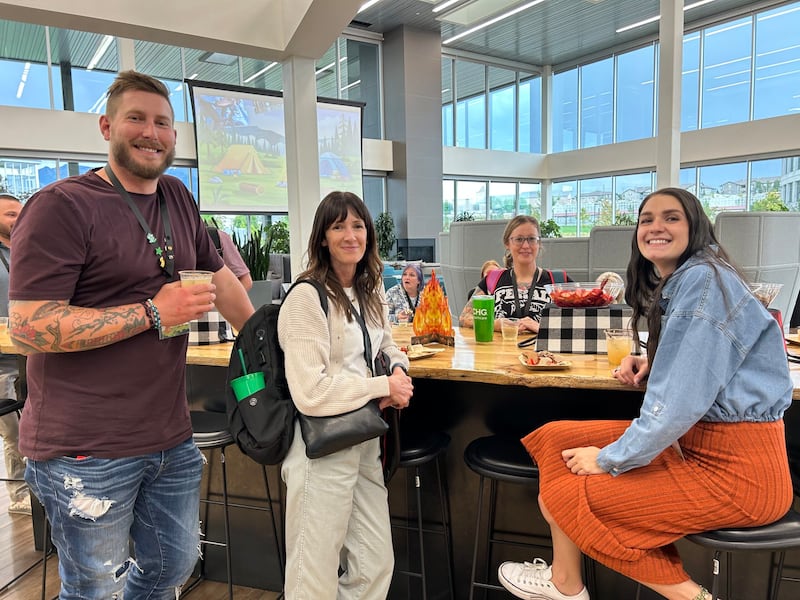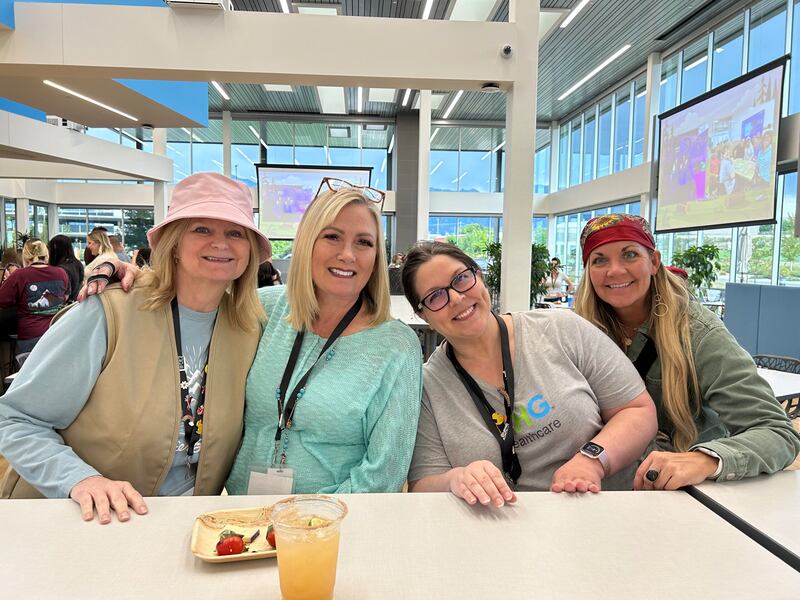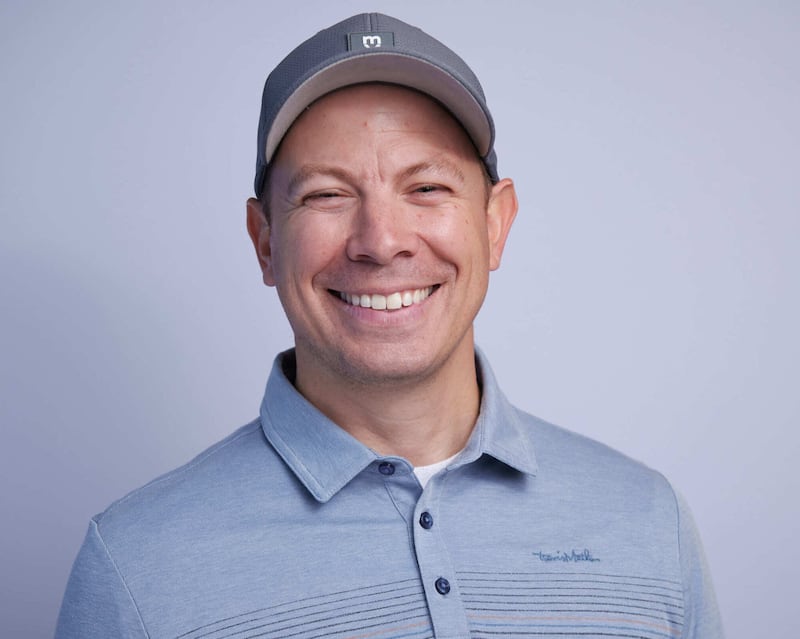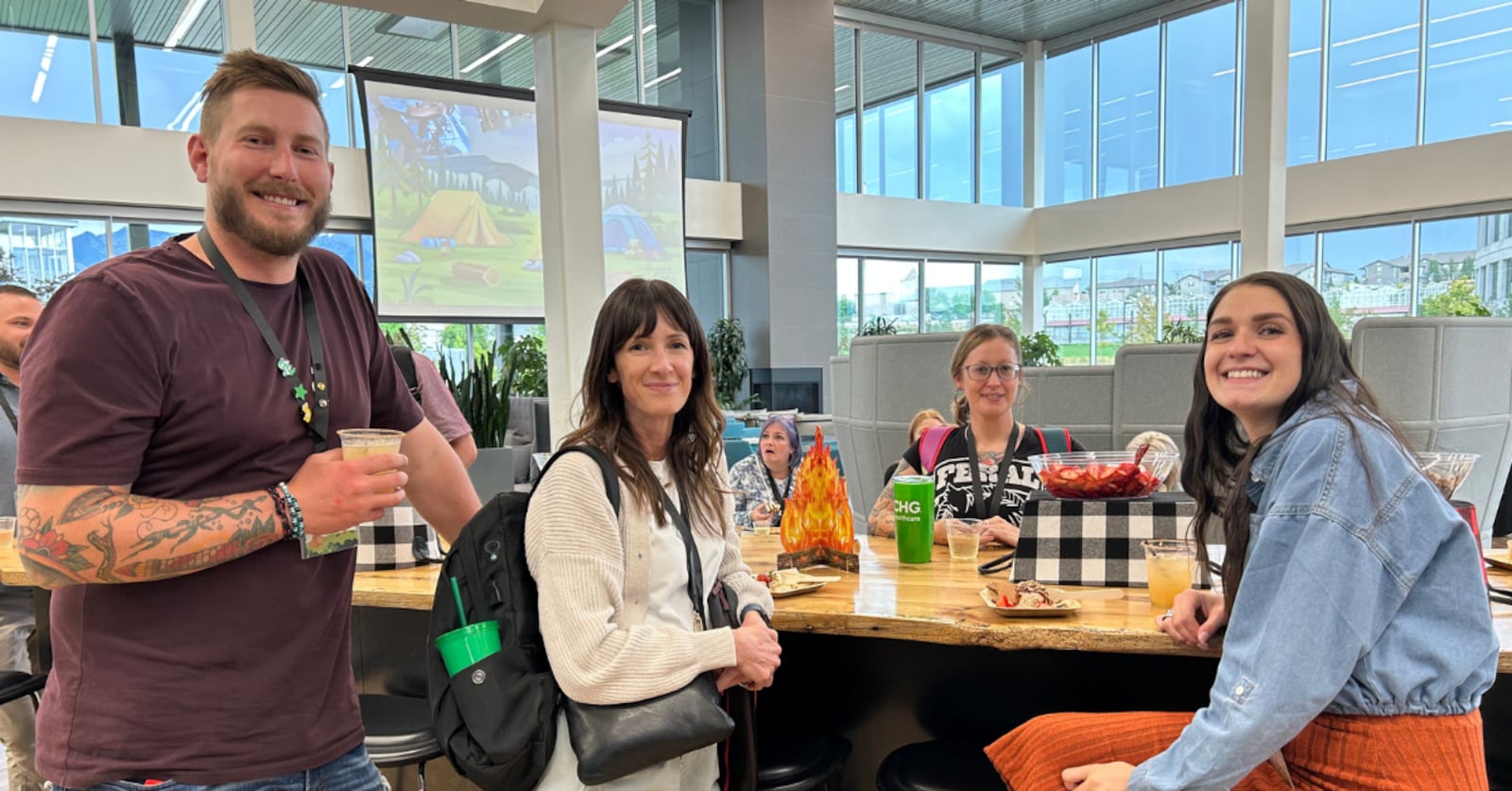
Photo courtesy of CHG Healthcare
“The suit I put on came straight from the dry cleaners, and my shirt was starched,” says Jeff Rossi, executive managing director at Newmark’s Salt Lake City office.
Rossi laughs as he recalls the formality and inflexibility of his work wardrobe in the early days of his commercial real estate career. “When I started, it was, ‘Do I wear my blue suit?’ or ‘Do I wear my black suit?’”
Today, things look slightly different.
“I try to mirror my client,” Rossi says. “My daily dress is usually a pair of jeans or chinos and a button-down shirt and a sports coat. In the winter, I wear almost exclusively leather boots or sometimes sneakers.”
Business on top, comfort on bottom
There’s no denying that work wardrobes today look different than they did just a decade ago. The pandemic-born work-from-home aesthetic made athleisure, sweatpants and gym clothes completely normal workwear. That wardrobe flexibility has been hard to let go of.
“I was dressed up basically from the waist up, and I’d be wearing sweats or leggings as my bottoms,” says Chelsea Durfee, a senior product designer at tech startup Podium. “Being able to be comfortable in my own space was important.”
As she started returning to the office, she found herself searching for new options when it came to her professional wardrobe.
“Before the pandemic, there was a lot more fitted clothing,” she says. “Now, jeans have a wider leg. … Overall, silhouettes are just so much more relaxed than they used to be. I want to wear things that I feel comfortable in but are still interesting.”

Photo courtesy of CHG Healthcare
For Durfee, that looks like pairing nice pants with a tank top and an overshirt or button-up shirt—something with a dramatic slit or flow. When it comes to shoes, she opts for sneakers rather than stiff, formal footwear. “Heels have never been a part of my work wardrobe,” she says. “I like to wear tennis shoes; I have a really fun green pair and a beige pair of Onitsuka Tigers that I love.”
Flexibility allows employees to find their balance
At Midvale-based CHG Healthcare (CHG), embracing employees’ “whole” lives is a top priority. Among other things, this means encouraging flexible wardrobes that enable individuals to go from the gym to work to kids’ appointments and back to the office again.
“Pre-pandemic, too much workout wear would probably not have been acceptable,” says Andrea Moreira-Alejandro, CHG’s senior director of culture. “But we’re trying to embrace someone’s home life, their whole life. People can still do their jobs super successfully and super effectively regardless of what they’re wearing.”
Brooke Ramirez, a senior marketing strategist at CHG, seconds Moreira-Alejandro’s observations. “It’s a pretty relaxed atmosphere,” she says. “We are all living such a crazy, flexible life.” But as someone who regularly conducts business with external individuals, Ramirez says she prefers to dress in a way that feels “professional and creative.”

Photo courtesy of Logan Mallory
While her work wardrobe has changed “a little” post-pandemic, leggings and other casual items remain strictly off-limits in her personal dress code. Most days, Ramirez is in jeans, a blouse and a blazer—items that are intentionally androgynous and modern, she says.
“It’s a motivator to go back to the office, to be able to wear things I haven’t worn in three years. Dressing up gives me additional confidence,” she continues.
Creating and harnessing a sense of confidence drives Logan Mallory and his professional wardrobe, too. As the VP of marketing at Motivosity, he leans into a comfortable, polished aesthetic that’s almost always topped off with a ball cap; it’s part of his personal brand.
“If you look at my photo on LinkedIn, I’m in a hat,” Mallory says. “The hat-at-work thing always kind of stands out. For me, it gives me a foundation of being approachable and collaborative and not too corporate.”
While he acknowledges that “29-year-old Logan” probably wouldn’t wear a hat “like 39-year-old Logan,” he generally strikes a respectful balance. “Most of the time, I’m wearing jeans, Stance socks, Nike shoes, a TravisMathew [shirt] and a hat. I speak about culture and leadership, and I’ve just decided to be who I am. Even on a stage, I’m usually in a polo and a Motivosity hat.”
As return-to-office mandates and hybrid work arrangements gain steam, both employees and employers are faced with work wardrobe choices that may look dramatically different from pre-pandemic times: looser silhouettes, stretchier fabrics and pieces that transition across home, office and errands without ado.
“Employee satisfaction is top of mind for me,” Rossi says. “What does a post-COVID environment look like that’s most beneficial to the growth of the employee and the company? It’s fantastic that companies are so supportive of employees and whatever helps them be the best version of themselves. I think that’s partly what you wear and how you wear it.”

